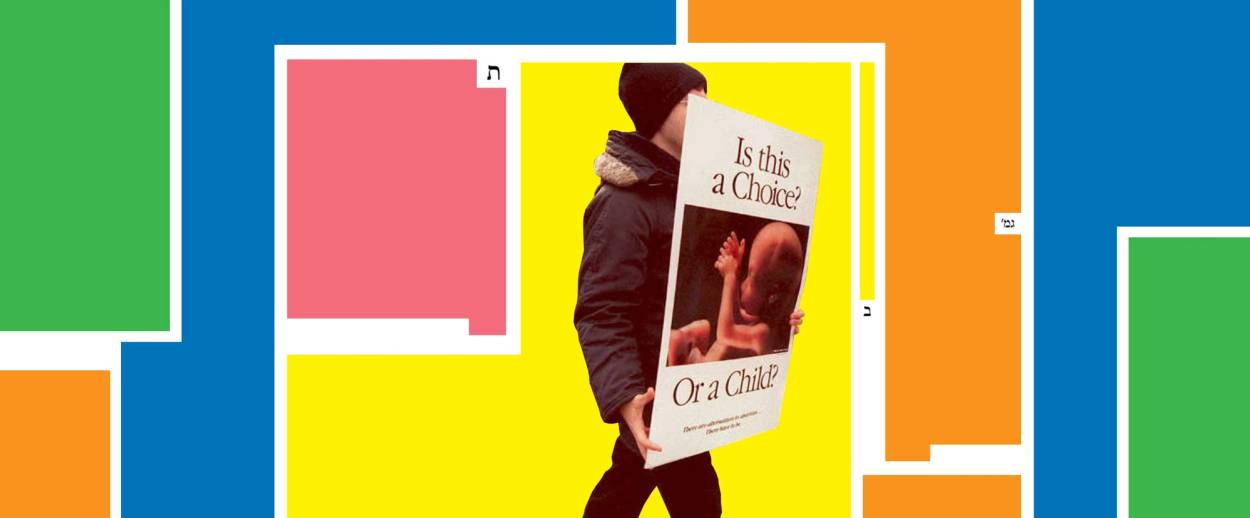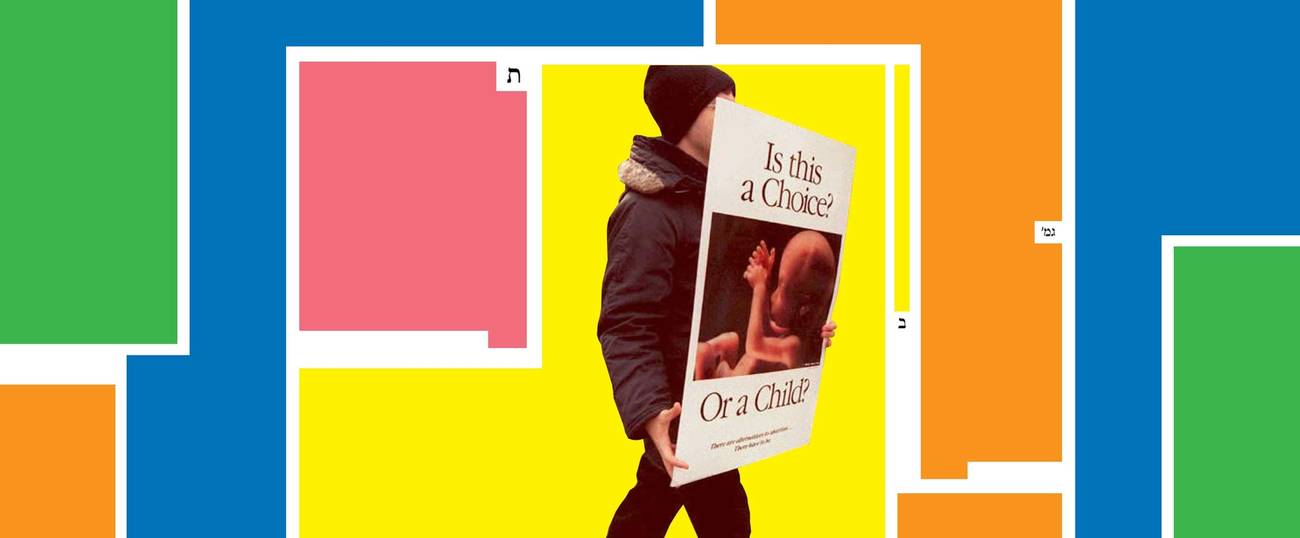When Does Human Life Begin?
This week’s ‘Daf Yomi’ Talmud study happens to pit contemporary abortion law against Jewish views of conception and viability in all animals




Literary critic Adam Kirsch is reading a page of Talmud a day, along with Jews around the world.
By sheer coincidence, Daf Yomi readers have recently been studying a question that is making headline news: When does a fetus become a life? Earlier this month, Georgia enacted a “fetal heartbeat law,” which prohibits abortion from the point where a fetus’ heartbeat can be detected. Similar laws are likely to be enacted in Mississippi and Ohio. Meanwhile, Alabama passed an even stricter law, which prohibits abortion in almost all circumstances starting from the beginning of pregnancy.
The question of whether and when abortion is allowed under Jewish law is a complicated one. But when it comes to the specific issue of when a developing fetus is considered to be alive, we found a clear answer in Bekhorot 21b: “The formation of a fetus in a woman takes forty days.” Before that time, a different Talmudic source says, the fetus is “like water,” since it hasn’t yet taken recognizable shape. As it happens, this definition fits well with the timing of the fetal heartbeat law, since a heartbeat can be detected around the sixth week of pregnancy.
But this does not necessarily mean that a 40-day-old fetus is considered to be a fully formed human being. For later on in Chapter 3 of Tractate Bekhorot, the rabbis offer a different standard of measuring fetal development, based not on the calendar but on size. Ordinarily, a human corpse imparts ritual impurity to everyone who is under the same roof with it. But in Bekhorot 22a, the Gemara says that if a woman has a miscarriage, the deceased fetus does not impart ritual impurity unless “the head of the fetus is round like the size of a skein of yarn.” The rabbis go on to debate exactly how big a skein of yarn is meant—is it a ball of warp threads or of the thicker woof threads?—but the principle is clear: Not until it has reached a certain stage of development is a fetus considered to be a human being.
Tractate Bekhorot, however, does not deal with abortion, and these discussions of fetal development arise in a totally different context. The main topic of the tractate is the obligation under Jewish law to sacrifice the firstborn male offspring of every kosher animal. But in Chapter 3, the rabbis raise the problem of what happens when you don’t know whether a newborn lamb or goat is in fact the firstborn. Say a Jew buys a female animal from a gentile, who is not required to keep track of whether it has previously given birth, and then the animal becomes pregnant. How does the Jewish owner know whether the ensuing offspring is in fact a firstborn?
To begin with, the mishna in Bekhorot 19b offers a rule of thumb based on the mother’s age. If a goat is younger than 1 year old, a ewe younger than 2, or a cow younger than 3, says Rabbi Yishmael, we can assume that they have not given birth before, so the first offspring born under the Jew’s ownership is presumptively a firstborn, and must be given to the priests. If the animal is older than that, the offspring’s status is uncertain.
However, one can’t err on the side of safety and simply give the “uncertain” newborn to the priests, because that might result in the sacrifice of an ineligible animal in the Temple, which is a serious transgression. In uncertain cases, then, Rabbi Akiva says that the animal should be “eaten in its blemished state by the owner.” In other words, such an animal is left to graze until it develops a physical blemish; since an animal is disqualified from sacrifice by a blemish, this means that it couldn’t be given to the priests even if it were proved to be a firstborn, and so it is safe for the owner to kill it and eat it. However, until that time the owner cannot use the animal for labor or shear it for wool, because these things are forbidden if it actually is a firstborn.
This all seems straightforward enough; but naturally, the rabbis find a complication. Using age as a rule of thumb for determining the motherhood status of animals only works if animals younger than that age cannot give birth. But, Akiva observes, an animal that is too young to give birth is not necessarily too young to have a miscarriage. And since a miscarriage technically counts as “opening the womb” of an animal, the first live birth after a miscarriage is not considered a firstborn for the purposes of consecration and sacrifice. But how can you tell if an animal has had a miscarriage?
It is in the course of this discussion that the rabbis address the stages of fetal development in both animals and human beings. According to Akiva, the sign of a miscarriage is when an animal expels a “murky discharge” from the womb. The Gemara discusses exactly what this discharge looks like: Rava says that it is what shepherds call detzalta, which is related to the Aramaic word for “filth,” while Shmuel says it resembles “bubbles of blood.”
To be certain of whether a given discharge is in fact the product of miscarriage, the rule is that one must consult an expert—which in this case, according to Rav Pappa, means not a Talmudic sage, who is expert in law but not in animal obstetrics, but rather an experienced shepherd. Yet as this whole discussion shows, even sages had to have a fair degree of familiarity with animal husbandry, just to make sense of the law. Talmudic law can be extremely complicated, but it always remains rooted in the gritty reality of life.
***
Adam Kirsch embarked on the Daf Yomi cycle of daily Talmud study in August 2012. To catch up on the complete archive, click here.
Adam Kirsch is a poet and literary critic, whose books include The People and the Books: 18 Classics of Jewish Literature.